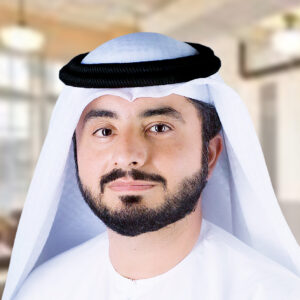Yahsat planning successor for Thuraya fleet

PARIS — With the acquisition of fellow Emirati satellite operator Thuraya completed this August, Yahsat is planning to order two replacement satellites by the end of 2019 to continue Thuraya’s L-band connectivity service.
Executives from Yahsat and Thuraya said having both UAE operators under the ownership of the state-owned Mubadala Investment Company gives solid footing for Thuraya to jumpstart fleet refresh plans from 2016 that had stalled out.
“The continuity of service for all of the customers of Thuraya is key and paramount,” Masood M. Sharif Mahmood, CEO of Yahsat, said during a September interview at the World Satellite Business Week conference in Paris. “And the fact that we are well capitalized and owned by a shareholder that is very well capitalized and owned by the government in Abu Dhabi should give a lot of confidence.”
Dubai-based Thuraya had announced plans at World Satellite Business Week two years earlier for a geostationary constellation that would replace its two aging L-band satellites by 2020 with more powerful satellites carrying L- and Ka-band capacity. Funding delays and the February 2017 departure of CEO Samer Halawi for Intelsat by way of OneWeb clouded that program, known as “Futura.”
Mahmood said Thuraya’s new satellites “might not be exactly the same concept that the previous management team had,” but plans are moving ahead to replace the 10-year-old Thuraya-3 and 15-year-old Thuraya-2 spacecraft.
Thuraya’s new CEO, Ali Al Hashemi, said he is confident Mubadala — a sovereign wealth fund with $45 billion in revenue and $125 billion in assets — will bankroll the new satellites provided Thuraya presents a solid business plan.
“Mubadala has a coherent process of how to get the funding and we think we have a big story to [tell] Mubadala to get the funding for the next two satellites,” he said.
Hashemi said Yahsat and Thuraya’s owner provides more than just ready capital. “They have big investments in artificial intelligence, data centers, [Internet of Things] solutions, aerospace and manufacturing, and semiconductors — all this can be leveraged to enhance our services,” he said.
The two Boeing-built satellites Thuraya operates today were designed to last at least 12 years, meaning Thuraya-2 is already three years past its expected end date. Geostationary telecom satellites often last beyond their design lives, but eventually run out of fuel and are forced to retire. Hashemi said discussions are underway with five satellite manufacturers for the replacements.
Hashemi, who is also Yahsat’s general manager of government solutions, said Yahsat and Thuraya have two committees working on the next-generation satellite system, one on the spacecraft and the other on the ground segment, including user devices and applications.
Hashemi said Thuraya’s target is to sign a contract for the two replacement satellites by the end of 2019.
“Mubadala will back us if we have our fundamentals right,” he said.
One difference between Thuraya’s Futura plan and the new plan under Yahsat ownership is an emphasis on deepening Thuraya’s presence in regions covered by its current satellites rather than expanding to global coverage. Mahmood said Thuraya’s existing L-band coverage area, which includes most of the world except for the Americas, still encompasses markets the company hasn’t penetrated. Yahsat is open to global coverage for Thuraya, “but as a priority it comes second,” he said.
Yahsat also brings Ka-band coverage over the Middle East, Africa, Brazil and parts of Asia through its three-satellite fleet. Hashemi said Thuraya wants to create products that leverage the signal strength of L-band with the high-throughput ability of Ka-band.
“After 10 years, the long-term vision is you have one device as a user,” he said. “You don’t know if it is L-band or Ka-band. If you are going to Facebook or video streaming, it will be immediately switched to Ka-band, but if you want to send an emergency signal to your parents, or to the police, it will be L-band. That will be the future.”
Hashemi declined to state Thuraya’s revenue, citing the operator’s status as a private company. He said Thuraya has been performing “excellently” in commercial markets, but has lagged behind in government services. Thuraya will seek new business with the UAE, which is already a Yahsat customer, and other governments, he said.
Thuraya said by email it has around 300,000 active subscribers for voice and data services. For comparison, competitor Iridium has nearly 1.1 million subscribers.
from SpaceNews.com https://ift.tt/2COAhpr
Comments
Post a Comment